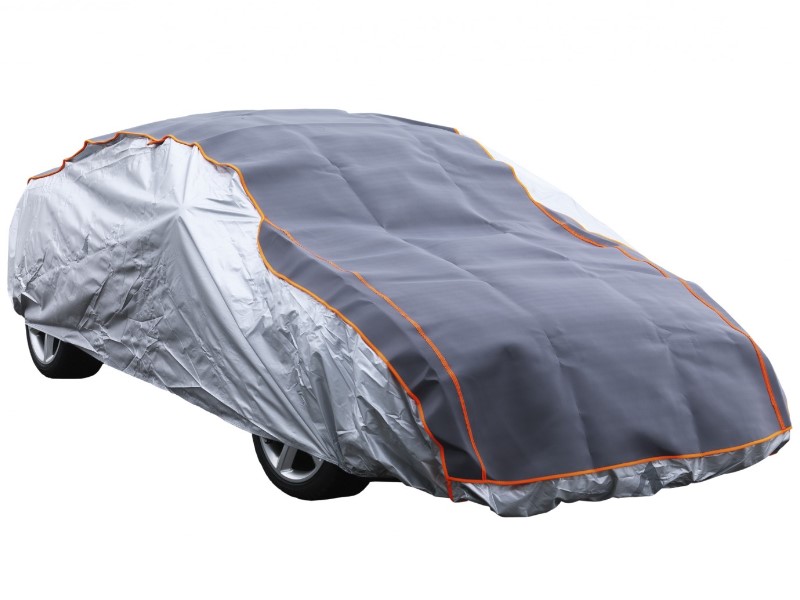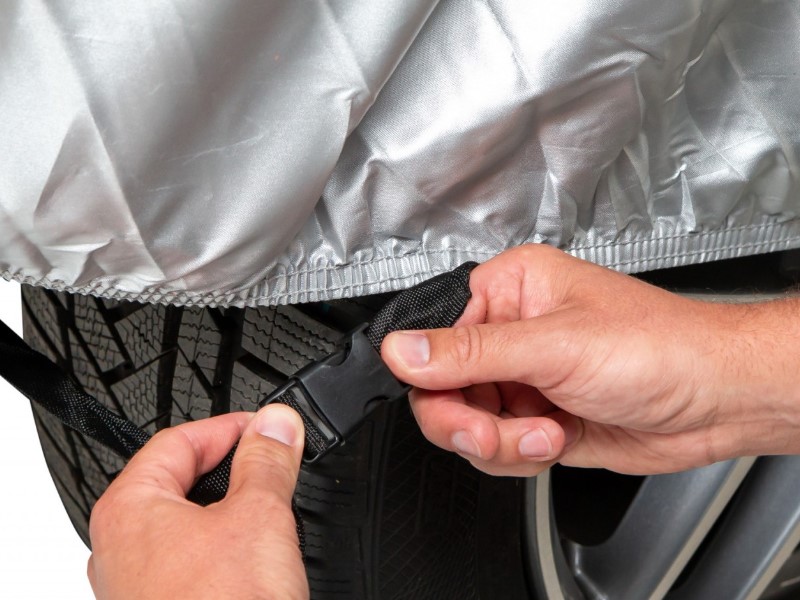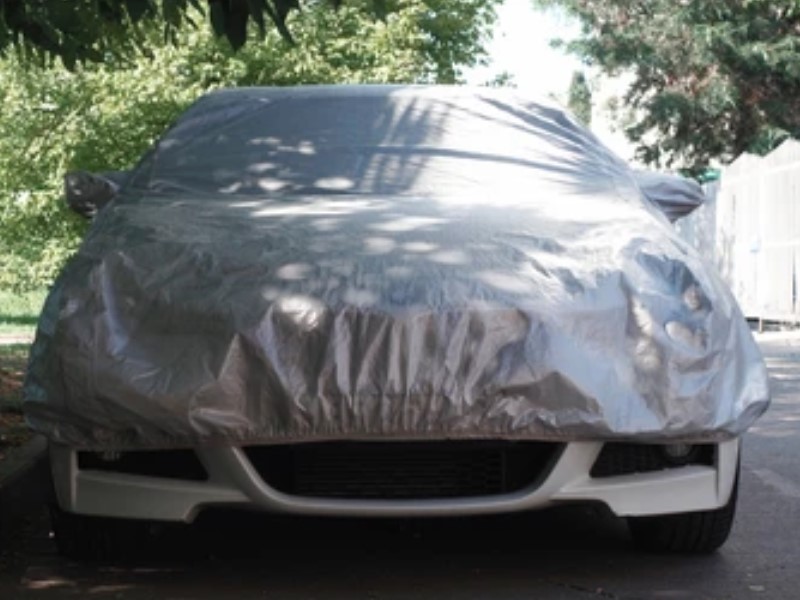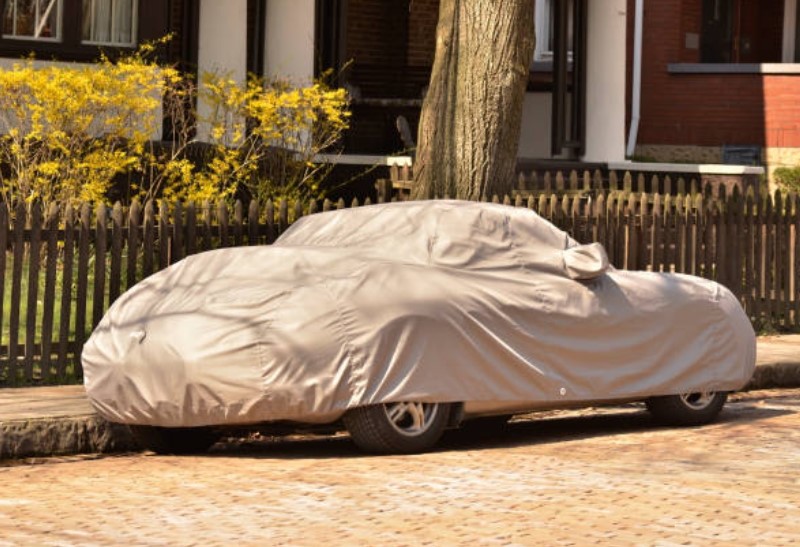Hail. It’s one of those natural phenomena that can wreak havoc on vehicles, crops, and even homes. From tiny pellets to monstrous chunks of ice, hailstones can vary in size and cause significant damage when they come plummeting from the sky during a storm. However, amidst this potential chaos, there exists a simple yet effective solution: the hail cover.
These protective shields serve a vital purpose in safeguarding our valuable assets from the destructive force of hailstones. In this comprehensive guide, we’ll delve into the importance of hail covers, their diverse uses and purposes, and essential tips on how to care for them to ensure their longevity and effectiveness.
Table of Contents
Hail Cover History
Hail covers have evolved alongside the need to protect vehicles from hail damage. Their history traces back to rudimentary attempts, such as blankets or tarps, placed over cars. In the mid-20th century, specialized hail protection emerged with the development of sturdy fabrics and synthetic materials.

By the late 20th century, dedicated hail covers became commercially available, offering tailored fits and enhanced durability. Advancements in materials and design have led to modern hail covers featuring lightweight yet robust materials, easy installation mechanisms, and even integrated technologies like impact-absorbing layers. Today, hail covers stand as essential shields against nature’s unpredictable wrath for vehicles worldwide.
The Importance of Hail Covers
Imagine waking up to find your car pockmarked with dents and dings after a severe hailstorm. Not only does it diminish the aesthetic appeal of your vehicle, but it also depreciates its value. Hail damage can be expensive to repair, often requiring extensive work and costly repairs. This is where hail covers step in as a proactive measure to mitigate potential damage.
Whether you own a car, truck, RV, or even a boat, investing in a quality hail cover can provide peace of mind during stormy weather. By shielding your vehicle from hailstones, these covers help preserve its exterior integrity, preventing unsightly dents and scratches. Moreover, they serve as a cost-effective alternative to repairs or insurance claims, potentially saving you thousands of dollars in the long run.

Beyond vehicles, hail covers are also instrumental in protecting crops and agricultural produce. For farmers and agriculturalists, hailstorms pose a significant threat to their livelihoods, as hail can obliterate entire fields of crops in a matter of minutes. By deploying hail covers over vulnerable crops, farmers can minimize crop damage and ensure a more fruitful harvest.
In addition to protecting tangible assets, hail covers also contribute to safety by reducing the risk of injury during severe weather events. Hailstones can pose a threat to pedestrians and animals alike, causing injury or even fatality in extreme cases. By covering outdoor spaces such as patios, playgrounds, and livestock enclosures with hail-resistant materials, individuals can create safer environments for themselves and their communities.
Uses and Purposes of Hail Covers
The versatility of hail covers extends far beyond mere protection from hailstones. These ingenious inventions serve a myriad of purposes across various industries and applications:
Vehicle Protection
As previously mentioned, hail covers are primarily used to shield vehicles from hail damage. Whether it’s a compact sedan or a luxury SUV, there are hail covers available in various sizes and designs to accommodate different types of vehicles.

Agricultural Protection
In agriculture, hail covers play a crucial role in safeguarding crops from hail damage. Fruit orchards, vineyards, and vegetable farms can all benefit from the protective canopy provided by hail covers, ensuring a bountiful yield despite inclement weather.
Outdoor Events
Outdoor events such as weddings, concerts, and festivals often face the risk of disruption due to unexpected weather conditions. Hail covers offer a practical solution by providing overhead protection for attendees and equipment, allowing events to proceed smoothly regardless of the forecast.
Livestock and Pet Safety
Hail covers can be utilized to create sheltered spaces for livestock and pets, shielding them from the hazards of hailstorms. From horse paddocks to dog kennels, these covers offer a sanctuary for animals during adverse weather conditions.
Construction Sites
Construction projects are susceptible to delays and damage caused by hailstorms, resulting in increased costs and safety risks. By deploying hail covers over construction sites, contractors can minimize downtime and protect materials and equipment from harm.
How to Take Care of Hail Covers
Proper maintenance is essential to ensure the longevity and effectiveness of hail covers. Follow these tips to keep your covers in optimal condition:
Regular Cleaning
Dirt, debris, and pollutants can accumulate on the surface of hail covers over time, compromising their protective properties. Clean your covers regularly using mild detergent and water, and avoid abrasive cleaners or harsh chemicals that may damage the fabric.
Storage
When not in use, store your hail covers in a cool, dry place away from direct sunlight and moisture. Proper storage helps prevent mold, mildew, and fabric deterioration, prolonging the lifespan of the covers.
Inspection
Periodically inspect your hail covers for signs of wear and tear, including tears, fraying, or weakened seams. Promptly repair any damage to prevent further deterioration and maintain the integrity of the covers.
Proper Installation
Ensure that your hail covers are installed correctly and securely to provide maximum protection. Follow the manufacturer’s instructions and guidelines for proper installation, and consider using additional securing mechanisms such as straps or weights in windy conditions.
Seasonal Maintenance
Before the onset of hail season, inspect your covers for any damage or defects and make any necessary repairs or replacements. Additionally, consider applying a protective coating or sealant to enhance the durability and weather resistance of the covers.
By incorporating these maintenance practices into your routine, you can prolong the lifespan of your hail covers and ensure reliable protection against hail damage for years to come.
Wrapping It Up
Hail covers serve a vital role in safeguarding our assets, ensuring safety, and minimizing the impact of hailstorms on our lives and livelihoods.

Whether protecting vehicles, crops, or outdoor spaces, hail covers offer a practical and cost-effective solution to mitigate the risks associated with severe weather events.
By understanding the importance of these car accessories, exploring its diverse uses and purposes, and adopting proper maintenance practices, you can harness the full potential of your hail cover to protect what matters most.
Articles from the same category:
- Best Anti-Hail Covers for Your Car
- Car Seats That Are Always at their Best
- Car floor covering material: carpet vs rubber
- Make the Right Choice Between Aluminum and Steel Roof Racks for Commercial Vehicles
- Textile or rubber – the perfect car mat
- Car Lift Basics You Should Know
- Protection and durability for your car’s interior

